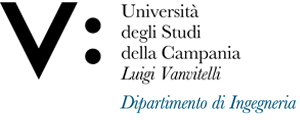MODELLAZIONE IDRAULICA DELL'AMBIENTE MARINO COSTIERO - INGEGNERIA PORTUALE E OFFSHORE (Corso Integrato)
Italiano
| Lingua di insegnamento | ITALIANO |
| Contenuti | Il corso fornisce agli allievi il know-how tecnico necessario |
| Testi di riferimento | Lisi I., Feola A., Bruschi A., Di Risio M., Pedroncini A., Pasquali D., Romano E. (2017). La |
| Obiettivi formativi | Partendo dai dati di clima ondoso al largo verranno studiati i modelli numerici che permettono di valutare la trasformazione del clima ondoso da largo a sottocosta, comprendendo l'effetto di |
| Prerequisiti | no |
| Metodologie didattiche | Il corso prevede lo svolgimento di lezioni frontali e dello sviluppo di esercizi progettuali |
| Metodi di valutazione | L’esame consiste nella prova orale con discussione degli esercizi svolti |
| Altre informazioni | Sono resi disponibili a cura del docente: |
| Programma del corso | Lezioni teoriche e applicative con i modelli numerici MIKE del DHI dei seguenti fenomeni: |
English
| Teaching language | Italian |
| Contents | The course provides students with the technical know-how necessary for the use of hydrodynamic and wave propagation models, which until a few years ago were the specific domain of a limited group of users. These tools are essential in practice for both institutional entities (local administrations, Basin Authorities, and ARPA) and private organizations. |
| Textbook and course materials | Lisi I., Feola A., Bruschi A., Di Risio M., Pedroncini A., Pasquali D., Romano E. (2017). La |
| Course objectives | Starting from offshore wave climate data, numerical models will be studied to evaluate the transformation of the wave climate from offshore to nearshore, including the effects of shoaling, refraction, and bottom friction. The effect of the resolution of the "calculation mesh" in the nearshore and/or structures will be studied, enabling the student to conduct highly detailed studies where it is necessary to consider phenomena such as diffraction and simple reflection caused by coastal structures such as groins, emerged or submerged breakwaters. |
| Prerequisites | no |
| Teaching methods | The course includes lectures and the development of design exercises |
| Evaluation methods | The exam consists of an oral test with a discussion of the exercises performed |
| Other information | They are available by the teacher: |
| Course Syllabus | Theoretical and practical lessons with DHI's MIKE numerical models on the following phenomena: |








